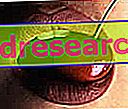
What is Buccolam - midazolam?
Buccolam is a medicine that contains the active substance midazolam. It is available as an "oral mucosa solution" (a solution administered on one side of the mouth, in the space between the gum and cheek) in pre-filled syringes. Each syringe contains 2.5 mg, 5 mg, 7.5 mg or 10 mg of midazolam.
What is Buccolam - midazolam used for?
Buccolam is used to stop prolonged, acute (sudden) seizures in children and adolescents (from 3 months to less than 18 years of age).
The medicine can only be obtained with a prescription.
How is Buccolam - midazolam used?
Buccolam is administered to one side of the child's mouth. The recommended dose ranges from 2.5 mg to 10 mg, depending on the age of the child.
The entire contents of the pre-filled syringe should be administered slowly in the space between the gum and the cheek. If necessary, the dose can be divided between the two sides of the mouth.
Buccolam should be administered by parents or by caregivers only to patients who have been diagnosed with epilepsy.
The caregiver to the patient should administer only a single dose. If the crisis does not cease within 10 minutes of Buccolam administration, immediate medical assistance must be requested.
Due to an increased risk of respiratory depression (inhibition of respiration), for children aged between 3 and 6 months Buccolam can only be administered in the hospital, where resuscitation facilities are available.
How does Buccolam - midazolam work?
The active substance in Buccolam is midazolam, a benzodiazepine that acts as an anticonvulsant. Convulsions are caused by an excess of brain electrical activity. Buccolam binds to the receptors of the neurotransmitter GABA in the brain, activating them. Neurotransmitters like GABA are chemicals that allow nerve cells to communicate with each other. In the brain, GABA reduces electrical activity. By activating the receptors, Buccolam potentiates the effects of GABA, stopping the seizure.
What studies have been carried out on Buccolam - midazolam?
The pharmaceutical company presented the results of five key studies from the published literature. The studies examined children suffering from acute convulsive crises by comparing the effects of midazolam for oral mucosa with those of diazepam (another benzodiazepine) administered intravenously (in a vein) or rectal (in the rectum). Four of these studies compared midazolam for oral mucosa with rectal diazepam. The measure of effectiveness was the ability of the treatment to stop the seizure within 10 minutes. The fifth study compared midazolam for oral mucosa with diazepam for intravenous use. The measure of effectiveness was the ability of the treatment to stop the seizure within 5 minutes.
What benefit has Buccolam - midazolam shown during the studies?
Reports in the published literature confirmed that midazolam for oral mucosa is effective in arresting seizures in children. In the four studies, midazolam for oral mucosa proved effective in arresting a seizure within 10 minutes in 65-78% of children, compared with 41-85% of children who received rectal diazepam. The comparison between midazolam for oral mucosa and diazepam for intravenous use gave very similar results.
What is the risk associated with Buccolam - midazolam?
The most common side effects with Buccolam (seen in more than 1 patient in 10) are sedation, drowsiness, level of depression, respiratory depression, nausea and vomiting. For the full list of all side effects reported with Buccolam, see the package leaflet.
Buccolam should not be used in people who may be hypersensitive (allergic) to midazolam or any of the other ingredients. It must not be used in patients with myasthenia gravis (a disease that causes muscle weakness), severe respiratory insufficiency (a condition of the lungs that causes difficulty in breathing), sleep apnea syndrome (frequent interruptions in breathing during sleep) or severe liver disease .
Why has Buccolam - midazolam been approved?
Based on the results of the studies presented, the CHMP concluded that Buccolam is at least as effective as existing treatments to stop prolonged, acute seizures in children. Although intravenous drugs may act more quickly from the time of injection, access to the veins may take time, especially in children. Buccolam has the advantage of being able to be administered more quickly and easily than a medicine for rectal or intravenous use. Regarding side effects, the medicine can cause respiratory depression, like other similar medicines, but it is generally well tolerated. The Committee therefore decided that Buccolam's benefits are greater than its risks and recommended that it be given marketing authorization.
More information on Buccolam - midazolam
On 5 September 2011, the European Commission issued a marketing authorization for Buccolam, valid throughout the European Union.
For more information on Buccolam therapy, read the package leaflet (also part of the EPAR) or contact your doctor or pharmacist.
Last update of this summary: 09-2011.



